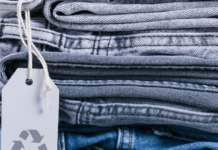The sustainability movement’s strength comes from many actors pulling in the same direction.
From making algae-sequin dresses, dyeing clothes with bacteria to planting trackable pigments in cotton, an emerging tide of technological innovations offers the fashion industry a chance to clean up its woeful environmental record.
Change is urgently needed, since the industry consumes 93 billion cubic metres of water per year, dumps 500,000 tonnes of plastic microfibres into the ocean, and accounts for 10% of global carbon emissions, according to the Ellen MacArthur Foundation.
The growing demands for change have generated ingenious responses, such as New York designer Charlotte McCurdy’s seaweed raincoat.
The shimmering algae-plastic she concocted in a lab made for a striking (and carbon-free) garment, even more so when she teamed up with fashion designer Phillip Lim to make a sequin dress. They are unlikely to show up in department stores. She sees them more as a way to demonstrate that decarbonised clothes are possible.













